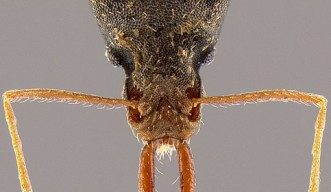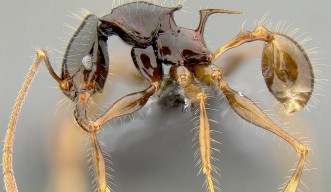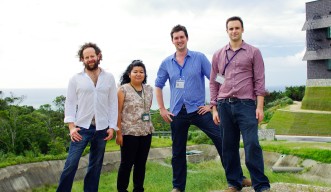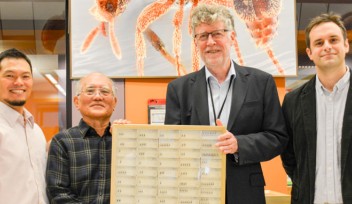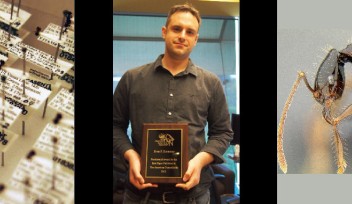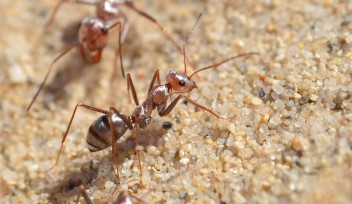New Unit Profile: Big Questions, Small Subjects
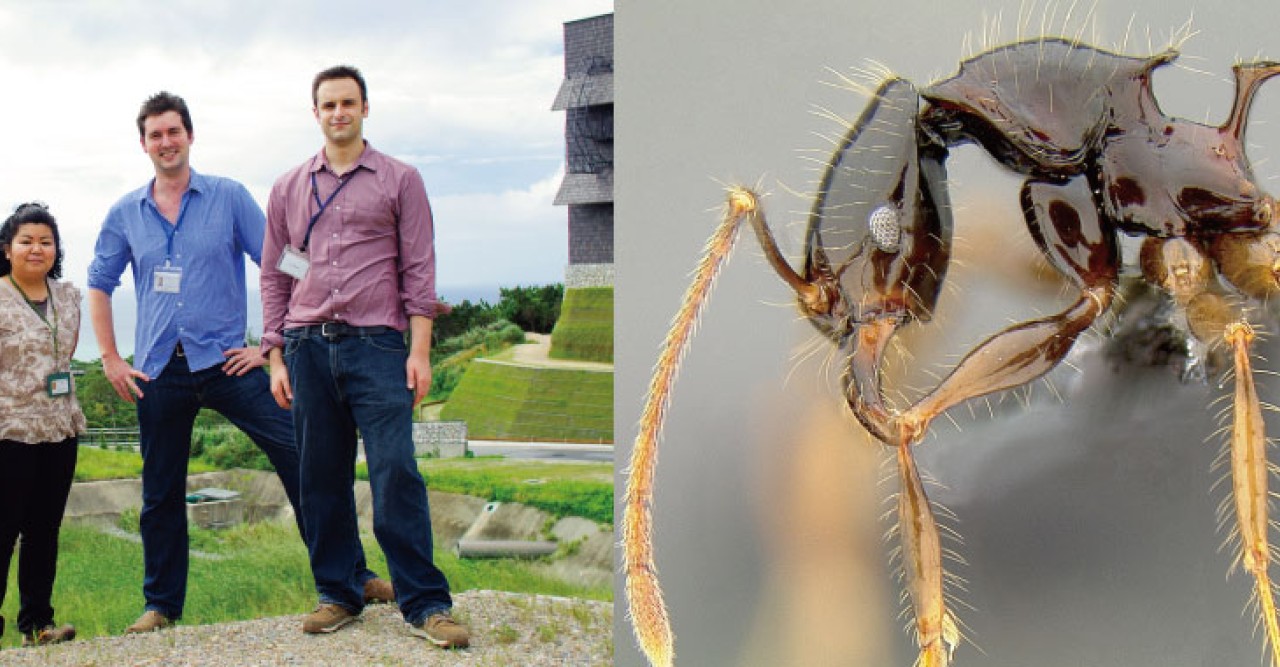
The two members of OIST’s newest research group, the Biodiversity and Biocomplexity Unit, had extra cause to celebrate when the Lab 2 building opened on June 20: they had been working out of the library since arriving at the university a few weeks before. In the new building, equipped with a cleanroom and labs custom-built for lasers and state-of-the-art characterization instruments, the new unit’s workspace was instantly recognizable for its stacks of collection boxes, piles of tweezers, and box of camping equipment.
The unit, led by Evan Economo, uses these classic tools of taxonomy—as well as genomic sequencing and computer modeling—to study how species evolve, move around, and adapt to their environments. To make sense of these big questions, they study one genus of ants on a global scale and entire ant communities in the Pacific islands.
Why ants, and why Pacific islands? Ants “are extremely ecologically important,” notes Prof. Economo, explaining that the combined mass of all the ants on Earth is roughly equal to the mass of all humans. “They aerate soil, move nutrients around, and help with pollination, and they have evolved complex societies, which is quite rare across the tree of life. But more generally, we use them as a model system to address fundamental questions in ecology and evolutionary biology,” he says. As for Pacific islands, they offer relatively closed and well-defined sites for study, and invite comparison between different islands with different conditions. “Since the time of Darwin, these relatively tractable island systems have stimulated new development in the field,” says Prof. Economo. Island ecosystems like Okinawa’s also happen to be among the most distinctive in the world—and the most threatened by factors such as deforestation, climate change, and invasive species.
The new unit will work on several related projects. In one, they will look at the evolution of one ant genus, Pheidole, the most diverse genus in the world with over 1200 described species. New Pheidole species arise at a faster rate than in almost any other animal group, but the reasons for this ‘hyperdiversity’ remain a puzzle. Prof. Economo’s goal is to test theories for how body shape, physiology, ecology, and behavior have evolved as the genus diversified and spread across the globe. Another project will track invasive ant species in the Pacific islands to find out what advantages allow them to out-compete native species, and whether their behavior changes over time as they evolve in their new habitats. A third project is developing a way to identify ant species using machine learning and computer vision, so that, for example, customs agents could use a smartphone application to find out whether ants they find might be dangerous invasive species. Such an app could also make ant-watching a hobby along the lines of bird-watching, Prof. Economo says, by making it easy for laypeople to know what they’re looking at. “I’m interested in using new technologies to change the way both scientists and laypeople interact with the natural world, and OIST is a particularly exciting place to pursue this goal,” he says.
Research Unit
For press enquiries:
Press Inquiry Form










